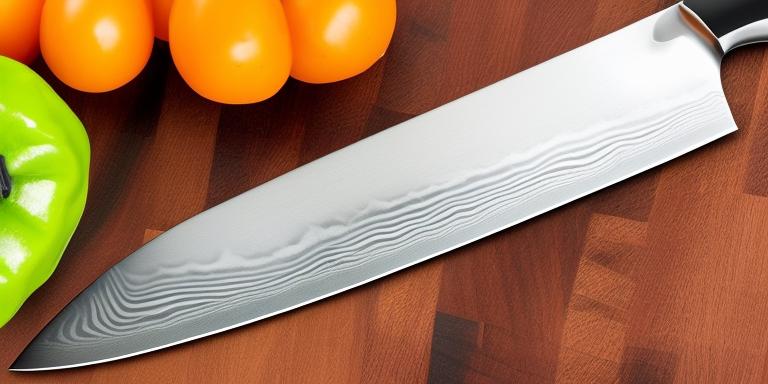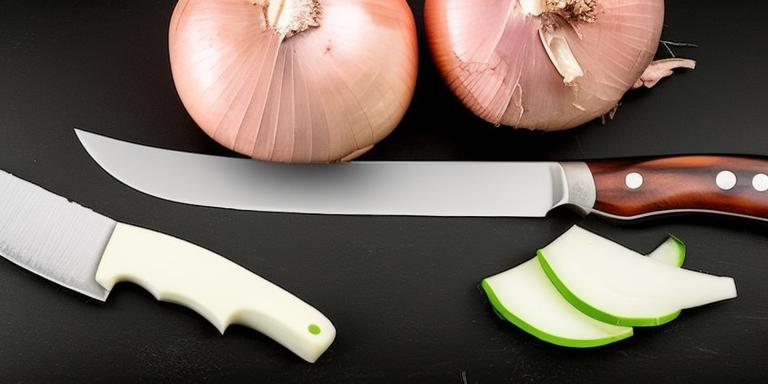Is there a kitchen that does not have a knife? Not at all. In fact, a kitchen can only be termed as a kitchen if it has a knife. But do you throw away your knife once you find rust on it? This should be the last thing you need to think about. Fortunately, this article on how to remove rust from kitchen knives has it all. It outlines different methods to remove rust from these knives and restore their original look. Read to the end.
6 Tips on How to Remove Rust From Kitchen Knives
Don’t throw away your kitchen knives if you realize they have rust. You can make them restore their original look. Don’t wonder anymore how this is possible. The tips below have it all.
White vinegar

What cant white vinegar clean? One of the ingredients in white vinegar is acetic acid. The acid is well-known for removing rust. Hence, use vinegar to remove rust from your kitchen knives.
- Follow the steps below when using white vinegar to remove rust from your knives.
- Wash your knife thoroughly to remove impurities using water and regular dish soap.
- Wipe with a cloth to make sure it dries completely.
- Put white vinegar in a container and soak your knife in it. Ensure the entire knife is soaked in the vinegar for 5 minutes.
- Remove the knife from the vinegar and wash it with clean water.
- Dry it completely.
Lemon and salt

Another way you can use to remove rust from your knife is with lemon and salt. Luckily, these are everyday essentials in a kitchen. The salt’s abrasiveness and lemon’s acidity is a fantastic combination that helps remove rust from metals. To carry out the process, follow the steps below.
- Cover your knife with salt.
- Slice a piece of lemon and squeeze some lemon juice over the salt. Ensure the juice seeps into the rusted spots and allow it to sit for two hours.
- Use a lemon rind to scrub the rusted spots.
- Rinse your knife thoroughly and wipe it dry.
- Repeat the process to remove the stubborn rust. This time, use an abrasive wire brush or steel wool to scour away the rust.
Baking soda

- Use this to remove light rust stains. When using baking soda to remove rust stains, use the guides below.
- Mix your baking soda with water to make a thick paste.
- Gently spread the paste over the rusted spots and ensure they are covered for one hour.
- Use a toothbrush to scrub away the rust stains.
- Repeat the process to remove stubborn rust stains. This time, use an abrasive sponge or steel wool to scour away the rust.
- Wash the blade with clean water to remove the paste.
- Dry your knife with a clean, dry cloth.
Citric acid

You can buy citric acid in a baking aisle, supermarket, or health food store. And because it is somehow harsh, be cautious. You must dilute it with water before use. Remove rust stains from your knives with citric acid using the steps below.
- Add 3 tablespoons of citric acid to a hot water bowl.
- Submerge your knife in the solution and allow it to sit there overnight.
- Remove the blade from the solution and scrub all the rust.
Onions

This sounds funny. But you can use onions to remove rust stains from your knives. Many people do not like cutting onions because they make them cry. But, now take it positively; the onion’s substance also helps remove rust in the knife. The common name of the substance is sulfenic acid. To remove the rust from your knife, slide the blade forth and back while cutting an onion. Repeat the same until you can no longer see the stains.
Potato

Chances are higher; you are wondering how this is possible. A potato has oxalic acid that helps remove rust from the metal. Follow the steps below
- Get a big potato, enough to stick your knife into.
- Ensure all the rusted spots are covered in the potato for 5 hours.
- Remove the kitchen knife from the potato and wipe the metal part with oil.
Reasons Kitchen Knives Rust
Now you already know how you can remove rust from kitchen knives. However, do you know what exactly causes them to rust? Glad you are here. The following are some of the reasons kitchen knives tend to rust.
At times, you will hear people calling rust iron oxide. In general, it is a flaky and orange substance that grows on metal. Besides being unsightly, it is dangerous. When it happens to your knives, be assured they can end up being useless.
But what exactly causes rust? There are ingredients involved in the formation of rust. They include:
- Iron (metal)
- Air
- Water
If your knives are constantly exposed to air and water, they will rust. But, this may not happen if they are made of titanium or ceramic.
Another material used to make knives is carbon or stainless steel. Carbon knives are the most susceptible to rust. This is because they contain more iron and less percentage of carbon. On the other hand, stainless steel carbon consists of chromium, carbon, and iron.
Even though stainless steel knife features iron, chromium covers this element and hinders it from oxidizing by air. Therefore, a stainless steel knife is rust-resistant but not rust-proof. Remember, the chromium will begin to disappear after use for a while. And because the iron in it will be exposed, it will cause the entire blade to start rusting.
How to prevent your kitchen knives from rusting
Yes, it is easy to remove rust from your kitchen knives. But, it is essential to know how you can prevent rust from taking place. As the English saying goes, “prevention is better than cure”; it is better to prevent rust from happening on your knives as much as possible. Luckily, this is possible. Below is a discussion on how you can do this.
- One of the rust ingredients is water. Thus, you can be sure it is the number one enemy of your knives. To prevent your knives from rusting, ensure they are completely dry after use. Wash them and store them dry in a dry place.
- Another thing you can do to prevent your kitchen knives from rusting is not to wash them in a dishwasher. This is because the heat produced in a dishwasher will cause the metal to contract and expand. Once this happens, your knife will likely develop stress and be susceptible to rust.
- Apply mineral oil to your kitchen knives. This is done to add a protective layer from rust. When storing your knives, lubricate them with mineral oil such as camellia oil. Doing this protects your knives from oxidizing.
- Store them in a cool, dry place. It does not necessarily have to be water that causes rust. Even moisture is a culprit in the rusting of your knives. Rust can develop on metals where the surrounding is a lot of moisture.
How to Clean Rust off of Your Kitchen Knives
Frequently Asked Questions (FAQs)
What is the fastest way to remove rust from stainless steel?
The best and most recommendable method to remove rust from stainless steel is using white vinegar. Using a 1:1 ratio of vinegar and water, spray the mixture onto the stainless steel with rust stains. The mixture should sit on the metal for a few minutes for positive outcomes. Once the time is up, use a scouring pad and scrub it lightly along the stainless steel grain to remove the rust.
Can you restore a rusty knife?
The rust should be gone when you put your knife with rust in vinegar. However, you have to grind or sand the knife to help remove bumpy holes made by rust.
How do you make a rusty knife shiny?
The best way to make a rusty knife shiny is by grabbing an abrasive sponge and loading it with a rust remover. Alternatively, you can scrub a baking soda paste with steel wool. Afterward, run the knife over a wet stone knife sharpener, and it will look better and new.
Is rust on kitchen knives safe?
The way you are trying everything possible to remove rust from your knife, you can tell it is not food material safe. Hence, it should not be ingested. In case you realize your utensils have rust stains, try everything possible to get rid of the rust.
How do you clean kitchen knives?
After use, make sure you clean your knife with hot water and dish soap. Afterward, rinse the knife with clean water and pat dry or air-dry it with a clean paper towel. When handling knives, you must be careful. You should not pile them into the dishpan or sink. Consider washing them one by one and then rack them with handles up.
Rita C. Donnell (Jennifer) has spent the last 26 years studying and practicing nutrition science. She has used a larger part of this time in improving people’s livelihoods. She has done so by coming up with unquestionable ideas on how to tackle food problems in her community. Readmore


